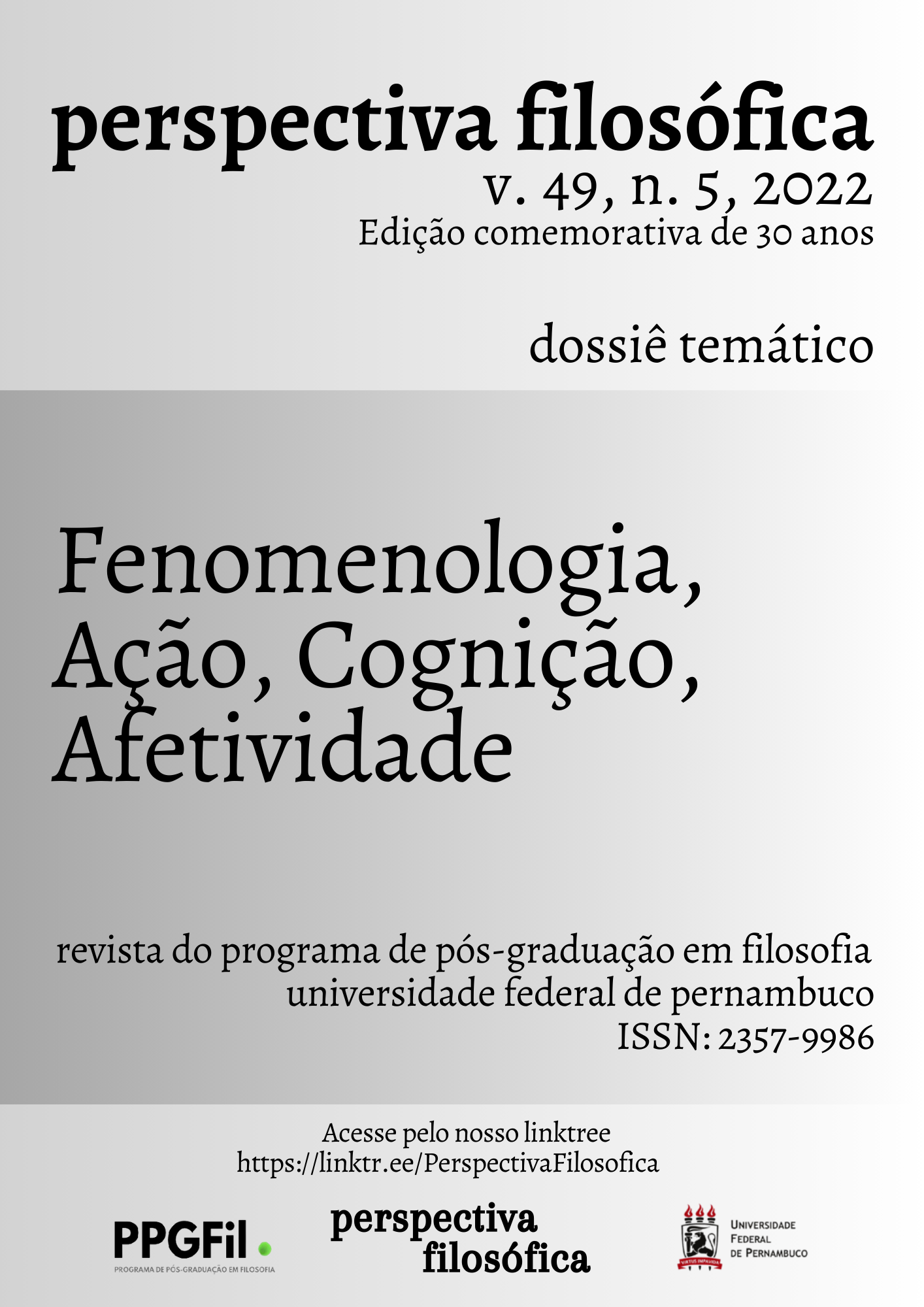Openness in situations of joint attention
DOI:
https://doi.org/10.51359/2357-9986.2022.256763Keywords:
Openness, joint attention, situation, non-wellfoundedness.Abstract
Openness is a distinctive feature in the episodes of joint attention. In such an episode, everything is in the open, nothing is hidden (PEACOCKE, 2005, p. 298). But what is this metaphorical description supposed to grasp? On the common knowledge approach, openness is characterized by an infinite list of iterated perceptual knowledge attributions. This approach overloads the cognitive costs of joint attention. On the relational approach, openness is a primitive notion; the phenomenon results from the fusion of perceptions between the agents, a singular experience of co-percipience that explains joint attention for free. This paper aims to argue for an intermediate approach to explain openness. We offer here an account of openness in terms of non-wellfounded situations. We shall argue that it not only fully characterizes mutual awareness in a finite adequate way but that it also preserves the low cognitive burden of the co-presence situation.
References
BARWISE, Jon. "Three views of common knowledge", In M. Vardi (ed.), Proceedings of the Second Conference on Theoretical Aspects of Reasoning about Knowledge. Los Altos, Calif.: Morgan Kaufmann, 1988, pp. 365–79.
BARWISE, Jon. The Situation in Logic. CSLI Lecture Notes 17. Stanford, Calif: CSLI. 1989.
BARWISE, Jon; PERRY, John. Situations and Attitudes. London: The MIT Press, 1983.
CALL, Josep; CARPENTER, Malinda. Do apes and children know what they have seen?. Animal Cognition (4), 2001, pp. 207-220.
CAMPBELL, John. "Joint Attention and Common Knowledge". In EILAN, Naomi; HOERL, Christoph; MCCORMACK, Teresa; and ROESSLER, Johannes. Joint Attention: Comunication and other minds. NY: Oxford University Press, 2005, pp 287-297.
GRIM, Patrick. The Incomplete Universe: Totality, Knowledge, and Truth. London: The MIT Press, 1991.
HARE, Brian; TOMASELLO, Michael. Domestic dogs use human and conspecific social cues to locate hidden food. Journal of Comparative Psychology, 113(2), 1999, pp. 173-177.
KAMINSKI, Juliane; RIEDEL, Julia; CALL, Josep; TOMASELLO, Michael. Domestic goats, Capra hircus, follow gaze direction and use social cues in an object choice task. Animal Behaviour, 69(1), 2005, pp. 11-18.
LEWIS, David. Convention: a philosophical study. Great Britain, Blackwell Publishers, 2002.
LISZKOWSKI, Ulf; CARPENTER, Malinda; HENNING, Anne; STRIANO, Tricia; TOMASELLO, Michael. Twelve-months-olds point to share attention and interest. Developmental Science 7(3), 2004, pp. 297-307.
PEACOCKE, Christopher. "Joint Attention: Its Nature, Reflexivity, and Relation to Common Knowledge". In EILAN, Naomi; HOERL, Christoph; MCCORMACK, Teresa; and ROESSLER, Johannes. Joint Attention: Comunication and other minds. NY: Oxford University Press, 2005, pp 298-324.
SCHIFFER, Stephen. Meaning. NY: Oxford Claredon Press, 1972.
SCHOEGEL, Christian; KOTRSCHAL, Kurt; BUGNYAR, Thomas. Gaze following in common ravens, Corvus corax: ontogeny and habituation. Animal Behaviour, 74 (4), 2007, pp. 769-778.
TOMASELLO, Michael; CARPENTER, Malinda. Shared Intentionality. Developmental Science 10(1), 2007, pp. 121-125.
Downloads
Published
Issue
Section
License
A Revista Perspectiva Filosófica orienta seus procedimentos de gestão de artigos conforme as diretrizes básicas formuladas pelo Conselho Nacional de Desenvolvimento Científico e Tecnológico (CNPq). http://www.cnpq.br/web/guest/diretrizesAutores que publicam nesta revista concordam com os seguintes termos:
Os autores mantém os direitos autorais e concedem à revista o direito de primeira publicação, sendo o trabalho simultaneamente licenciado sob https://creativecommons.org/licenses/by/4.0/deed.pt_BR que permite o compartilhamento do trabalho com reconhecimento da autoria e publicação inicial nesta revista.
Os autores têm autorização para assumir contratos adicionais separadamente, para distribuição não-exclusiva da versão do trabalho publicada nesta revista, com reconhecimento de autoria e publicação inicial nesta revista (Consultar http://opcit.eprints.org/oacitation-biblio.html).

Esta revista está licenciada com uma Licença Creative Commons Atribuição 4.0 Internacional.













